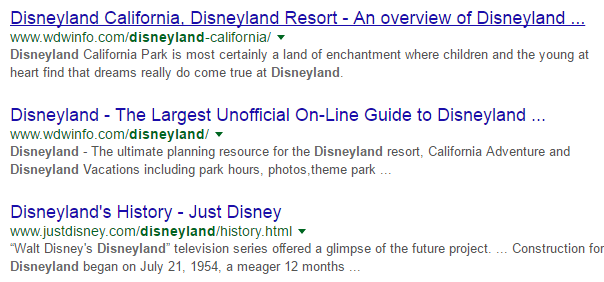Welcome to our weekly round-up of all the latest news and research from around the world of search marketing and beyond.
This week we have major updates from Periscope and interesting stats from Bing. Oh yeah and tonnes of new stuff from Google, because you know, it’s a weekday ending in ‘y’.
A quarter of all searches on Bing are voice searches
As reported by MediaPost, Bing has announced that 25% of searches on the Windows 10 taskbar using Bing are voice queries.
Also according to Rob Wilks, VP North America Search Sales at Microsoft Search Advertising, voice searches have become longer. “Text searches are between one to three words, compared with voice searches that have grown to between six and 10 words”
It won’t be long before the tone of your voice will be as important as the keywords you use…
“Search is bigger than keywords… Understanding the keywords is only a stepping stone. It’s no longer about the traffic it drives, but how marketers interpret the interaction through data.”
Until all those kids from Southern California confuse the algorithms with their rampant use of upwards inflection.

Periscopes are now permanent and searchable
Periscope was once the perfect allegory of our time on Earth: transient and fleeting. Now with the introduction of a few new features, Periscope is now the perfect allegory for how we want every piece of information in the world accessible immediately and 24 hours a day despite the utter pointlessness of existence. Sorry, I’ve been listening to the new Radiohead album a lot this week.
You will now be able to search for broadcasts by title or topic, including #Travel, #Music, #Food and you’ll also be able to broadcast on these specific topic names too.
Periscope has also launched the ability to keep your broadcasts available beyond 24 hours. This is now the default for all Periscopes, but this can be changed in your settings and you can always delete your broadcasts at any time.
And finally Persicope has also added a new feature giving you the ability to broadcast directly from a drone. A concept as hilarious as it is terrifying.
Google News has launched a ‘Local Source’ Tag to give local news sources a boost
According to a 2015 Pew Research study, “nearly nine out of 10 residents follow local news closely and about half do so very closely” and with more than 75,000 news sources being local, Google has introduced a Local section in Google News.
According to its blog-post, this new section will “surface content from regional papers to hyper-local blogs that otherwise wouldn’t appear in national news.”
And to ensure that local stories remain in the news cycle and are properly credited with their initial ‘legwork’ once a story has gone national, a new ‘Local Source’ tag is available across all Google News editions.
Unfortunately these tags can’t be manually added, instead they’re automatically added by Google. It does this by “looking at where a publisher has written about in the past and comparing that to the story location.”
Google bans pay-day loan companies from AdWords
Google has updated its AdWords policy on lending products and taken an ethical stand against those who offer quick loans with astronomically high APRs, by effectively banning them from paid search.
As of July 13th 2016, Google will no longer run ads for loans where repayment is due within 60 days of the date of issue. In the US Google is also banning ads for loans with an APR of 36% or higher.
According to AdGooroo, this will mean Google forfeiting $34.5 million in advertising revenue as a result of its new ban.
- 4,211 advertisers sponsored 726 payday loan keywords on US Google desktop search last year, at an average cost per click of $5.32.
- As the top advertiser on the 726 payday loan keywords, MoneyMutual spent nearly $2.7 million with Google on that keyword group alone in 2015.
Google has officially strengthened its mobile-friendly ranking signal
According to John Mueller, the mobile ranking signals that Google said it would more strictly enforce, have now officially been rolled out.
FYI The mobile changes mentioned here are now fully rolled out. https://t.co/fTB3ia6LJ2
— John Mueller (@JohnMu) May 12, 2016
This follows criticism that the initial ‘mobilegeddon’ update was nothing more than a minor blip, but perhaps also revealed a generously patient side of Google, being as it gave webmasters more than a solid couple of years to sort their crappy non-responsive sites out. SHEESH!
Is Google extending titles and descriptions in search results?
As spotted by Ross Hudgens last week, Google has been testing 69-70 character lengths for its titles, as opposed to the standard 50-60.
Long title tags being tested again in the SERPs. Seeing 69 and 70 character results today. pic.twitter.com/esiKTctV96
— Ross Hudgens (@RossHudgens) May 6, 2016
And as SEM Post points out, this is an increase of 10-15 characters and “can go up to at least 71 characters, depending on the letters used, since l and i are small characters.”
SEM Post also reveals that descriptions have also increased by about 16-20 characters per line to 100 characters.
However Google is still truncating the descriptions for many search results: “This means that the overall description is only displaying 150-160 characters total right now, for a usual 2 line snippet.”

Will this be the future of search pages? Who knows. Who cares! I’m still dealing with the fact I flew a drone into my mom’s garage and it’s gonna take me months working overtime at Jimmy’s Pizza to pay for the damage.
No comments:
Post a Comment